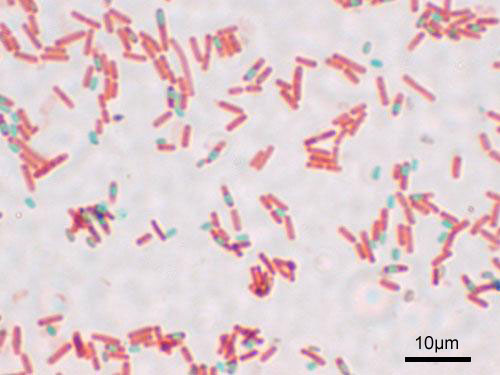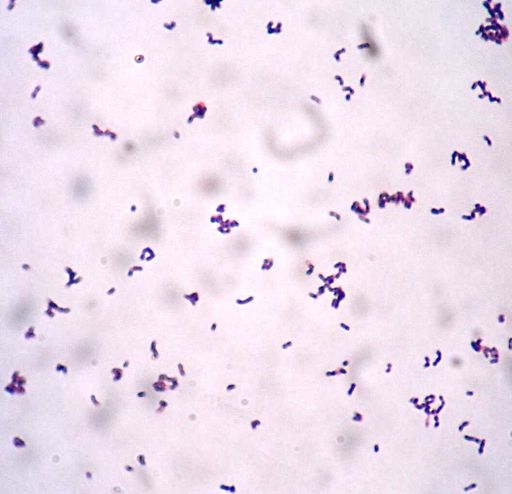Hydrogen-oxidizing Bacteria
** Definition, Characteristics and Examples
Definition
Hydrogen-oxidizing bacteria are species that can use hydrogen (gaseous hydrogen) as the electron donor (can oxidize hydrogen). They are divided into three main groups that include; facultative autotrophs (facultative chemolithoautotrophic), aerobic and anaerobic hydrogen-oxidizing bacteria.
Characteristics and Examples
Facultative Autotrophs
Compared to the other hydrogen-oxidizing bacteria, those described as facultative autotrophs can fix carbon dioxide. However, they can also use various organic substrates as a source of energy.
Because of their ability to use organic and inorganic sources, these species are widely distributed in nature. They can be found in aquatic and terrestrial environments including swamps, rice fields, the gut of some animals, deserts, compost, and soils.
Collectively, these bacteria are also known as Knallgas bacteria, those that can fix carbon dioxide through the oxidation of hydrogen and using oxygen as the terminal electron acceptor.
One of the best studied facultative autotrophs is the bacterium Aquaspirillum autotrophicum, a member of the family Neisseriaceae. Commonly found in eutrophic freshwater environments (e.g. eutrophic lakes), the bacterium is characterized by a rod-shaped morphology and bipolar flagella.
Other bacteria that belong to this group include:
· Aquificales
This group, Knallgas-bacteria, comprises bacteria from different taxonomic units. For this reason, they display diverse characteristics in morphology, ecology, and nutrition. Whereas Proteobacteria consists of Gram-negative species (pathogens and free-living), the phylum Firmicutes consists of Gram-positive members which are involved in carbohydrate metabolism in the gut.
Aquificales, on the other hand, are mostly Gram-negative species that can be found in extreme/harsh environments such as hot springs.
See more on Gram positive and Gram negative bacteria.
Though Knallgas-bacteria need oxygen as the terminal electron acceptor, the majority of species grow well in microaerophilic conditions. This is largely due to the fact that the enzyme hydrogenase required for hydrogen oxidation is affected/inhibited by oxygen.
* Some species like H. Pylori have been shown to grow in elevated oxygen levels in the laboratory.
* Facultative autotrophs can also grow under completely heterotrophic conditions.
Generally, carbon dioxide fixation using hydrogen as the electron donor is represented as follows:
6H2 + 2O2 + CO2 = CH2O + 5H2O
This process is commonly referred to as the Knallgas reaction.
The enzyme involved in this process is known as hydrogenase. There are two types of hydrogenase enzyme which include cytoplasmic NAD-specific hydrogenase (also known as hydrogen hydrogenase) and the membrane-bound hydrogenase.
Some members of this group contain one type of the enzyme while others have been shown to contain both. For species that contain the two types of the enzyme, hydrogen is first oxidized by the membrane-bound hydrogenase. Electrons are then transported through the electron transport chain to the quinones and cytochromes.
The second hydrogenase enzyme (cytoplasmic hydrogenase) serves to generate reducing power (NADH) that is eventually used to fix carbon dioxide in the Calvin cycle.
Proteobacteria
Proteobacteria is a large phylum of Gram-negative bacteria. Some of the genera within this group include Escherichia, Salmonella, Legionellales, and Vibrio, etc. As mentioned, most members of the group have flagella used for movement.
For instance, Vibrio species are monotrichous and thus use a single polar flagellum for movement.
Others do not have flagella and rely on gliding to move from one point to another. Some of the species (e.g. some members of the class Alphaproteobacteria like Rhizobium species) are free-living.
Gammaproteobacteria, a class of the phylum Proteobacteria is an example of hydrogen-oxidizing bacteria. Common in the marine environment, these bacteria have been shown to be capable of producing the enzyme hydrogenase (Fe hydrogenase) that is used for hydrogen oxidation.
Aquificales
Aquificales is an Order of bacteria within the phylum Aquificae. Members of this group are Gram-negative rods that grow in areas with a temperature range between 60 and 90°C (in hot springs, thermal ocean vents, and sulfur pools, etc.).
Some species within this group include:
- Thermocrinis ruber
- Calderobacterium hydrogenophilum
- Hydrogenobacter marinus
- Thermocrinis minervae
Members of the genus Aquifex (e.g. Aquifex aeolicus) are some of the most popular hydrogen oxidizing bacteria in the group. Like the other hydrogen oxidizing species, they produce hydrogenase (Hydrogenase I) that allows them to fix carbon dioxide (chemolithoautotrophs).
Firmicutes
The phylum Firmicutes consists of Gram-positive bacteria. However, some of the species (e.g. Pectinatus species) cannot retain the primary stain because of the porous outer membrane.
They exhibit significant variation in morphology from spherical (cocci) to rod-shaped (straight or curved). They also produce spores that allow them to survive harsh environment conditions, high temperatures or high salinity.
Some of the genera within this group include:
- Enterococcus
- Ruminicoccus
- Bacillus
- Clostridium
- Paenibacillus
* Members of the phylum Firmicutes can be found on terrestrial environments, in plants, and guts of various animals.
* A good number of species within this group contain Fe-hydrogenase which is used in microaerophilic conditions.
Actinobacteria
Members of this group are Gram-positive rods (slender) that are characterized by high G+C content in their genome. They can be found in aquatic (marine sediments) and terrestrial environments across the globe.
The majority of species are filamentous and form branched filaments that resemble mycelium. The phylum Actinobacteria consists of a wide variety of organisms that are beneficial for the environment contributing to the carbon cycle.
They produce different types of products that continue to be used in medicine, agriculture, textile, and other industries.
Some members of the Phylum Actinobacteria include:
- Micromonospora
- Nocardioform
- Streptomyces
- Nocardia
- Rhodococcus
Like many other hydrogen-oxidizing bacteria, Members of the Phylum Actinobacteria have also been shown to be responsible for hydrogen uptake.
Mycobacterium smegmatis, a member of the family Mycobacteriaceae, uses two membrane-associated, oxygen-dependent hydrogenases (NiFe hydrogenases) for hydrogen oxidation. Here, oxygen acts as the electron receptor.
Aerobic Hydrogen-oxidizing Bacteria
Compared to Knallgas-bacteria (which fix carbon dioxide), aerobic hydrogen-oxidizing bacteria use hydrogen without fixing carbon dioxide. Here, however, it's worth noting that some of the bacteria described as Knallgas-bacteria are aerobic (need oxygen as the electron acceptor).
As well, not all aerobic hydrogen-oxidizing bacteria are Knallgas-bacteria.
Some of the bacteria that use hydrogen without fixing carbon dioxide include:
- Acetobacter species
- Azotobacter species
Acetobacter
The genus Acetobacter consists of acetic acid bacteria. Members of this group are characterized by their ability to convert ethanol to acetic acid aerobically. Morphologically, Acetobacter species may be ovoid or rod-shaped. Rod-shaped species are straight or curved (between 1.0 and 4.0 um in length).
Depending on the species, they may occur singly or form short chains. Some of the species move by means of flagella (peritrichous bacteria). Across the world, Acetobacter species (Acetobacter hansenii) are widely distributed in vegetation and are responsible for the rot of fruits like pears and apples.
Using hydrogenase, species like Acetobacter peroxydans, can take up hydrogen and use it as an electron donor. Reduction of hydrogen peroxide by this bacterium also results in the production of hydrogen which is used to reduce Quinone and oxygen.
Azotobacter
Azotobacter is a genus of the phylum Proteobacteria. Members of this group are Gram-positive organisms that form thick-walled cysts. They may be oval or spherical in shape; ranging from 2 to 10um in size depending on the species.
Species like Azotobacter vinelandii move by means of flagella. However, these structures are usually lost during encystment. Though they are ubiquitous in nature, Azotobacter species are commonly found in habitats with neutral to weakly basis pH.
Examples of species in this group include:
- Azotobacter vinelandii
- Azotobacter salinestris
- Azotobacter chroococcum
- Azotobacter beijerinckii
* In species like Azotobacter vinelandii, there are three types of nitrogenase isoenzymes that produce hydrogen as a by-product. This hydrogen is then re-oxidized.
Like Knallgas-bacteria, these bacteria belong to different taxonomic groups and therefore exhibit a range of different characteristics. For instance, while the three groups consist of Gram-negative species, Enterobacteriaceae bacteria have a rod-shaped morphology and some of the species can move by means of peritrichouse flagella.
Azotobacter species can be oval or spherical in shape and mostly live freely in the soil. Lastly, members of the genus Acetobacter are commonly found in fermented foods, rotting pears, and apples and are characterized by their ability to oxidize lactate and acetate.
Like some of the Knallgas bacteria, Azotobacter vinelandii, a member of the genus Azotobacter, contains a membrane-bound hydrogenase enzyme involved in the reversible oxidation of hydrogen (molecular hydrogen).
Under aerobic conditions, the bacterium, using the enzyme, oxidizes dihydrogen to produce protons and electrons. These electrons are then transported, through the electron transport chain, to oxygen which acts as the electron acceptor.
This process has also been observed in Acetic acid bacteria. Here, however, a number of molecules can act as hydrogen acceptors in the absence of oxygen.
Anaerobic Hydrogen-oxidizing Bacteria
Like aerobic species, bacteria that oxidize hydrogen anaerobically do not fix carbon dioxide.
Some of the most popular members of this group include:
- Acetobacterium woodii
- Clostridium aceticum
Acetobacterium woodii
Acetobacterium woodii is a member of the genus Acetobacterium. Like the other Acetobacterium, it's an anaerobic, rod-shaped Gram-positive organism. It can be found in several habitats including dust air, aquatic sediments, and various soil habitats.
* Acetobacterium woodii is anaerobic and does not produce spores.
* The bacterium produces the enzyme hydrogenase. Here, however, hydrogen utilization occurs anaerobically.
Clostridium acticum
A member of the genus Clostridium, Clostridium aceticum is a Gram-positive organism found in anaerobic habitats (e.g. sewage sludge). Like some of the other members in the genus, Clostridium aceticum is rod-shaped and moves by means of flagella (peritrichous flagella).
Chemoorgranotrophically, Clostridium aceticum uses such compounds as fructose and L-glutamate for growth. However, it can also use hydrogen and carbon dioxide to grow under anaerobic conditions; chemolithotrophically.
Bacteriology as a field of study
Bacterial Transformation, Conjugation
How do Bacteria cause Disease?
Bacteria - Size, Shape and Arrangement - Eubacteria
Return from Hydrogen-oxidizing bacteria to MicroscopeMaster home
References
A L Menon and R L Robson. (1994). In Vivo and In Vitro Nickel-Dependent Processing of the [NiFe] Hydrogenase in Azotobacter vinelandii.
Graham M. Pumphrey, Anthony Ranchou-Peyruse, and Jim C. Spain. (2011). Cultivation-Independent Detection of Autotrophic Hydrogen-Oxidizing Bacteria by DNA Stable-Isotope Probing.
Lisa G. Kuhns et al. (2016). Carbon Fixation Driven by Molecular Hydrogen Results in Chemolithoautotrophically Enhanced Growth of Helicobacter pylori.
Michel Aragno and Hans G. Schlegel. (1981). The Hydrogen-Oxidizing Bacteria
Links
https://www.sciencedirect.com/topics/biochemistry-genetics-and-molecular-biology/acetobacterium
https://courses.lumenlearning.com/boundless-microbiology/chapter/chemolithotrophy/
https://asknature.org/strategy/bacteria-use-hydrogen-as-energy/
Find out how to advertise on MicroscopeMaster!


![Azotobacter by DAN H. JONES - JONES D. H. FURTHER JOURNAL OF BACTERIOLOGY, 1920, VOL. 5, NO. 4 Р. 325-341 [1], Public Domain, https://commons.wikimedia.org/w/index.php?curid=7680262 Azotobacter by DAN H. JONES - JONES D. H. FURTHER JOURNAL OF BACTERIOLOGY, 1920, VOL. 5, NO. 4 Р. 325-341 [1], Public Domain, https://commons.wikimedia.org/w/index.php?curid=7680262](https://www.microscopemaster.com/images/Azotobacter_cells.jpg)




